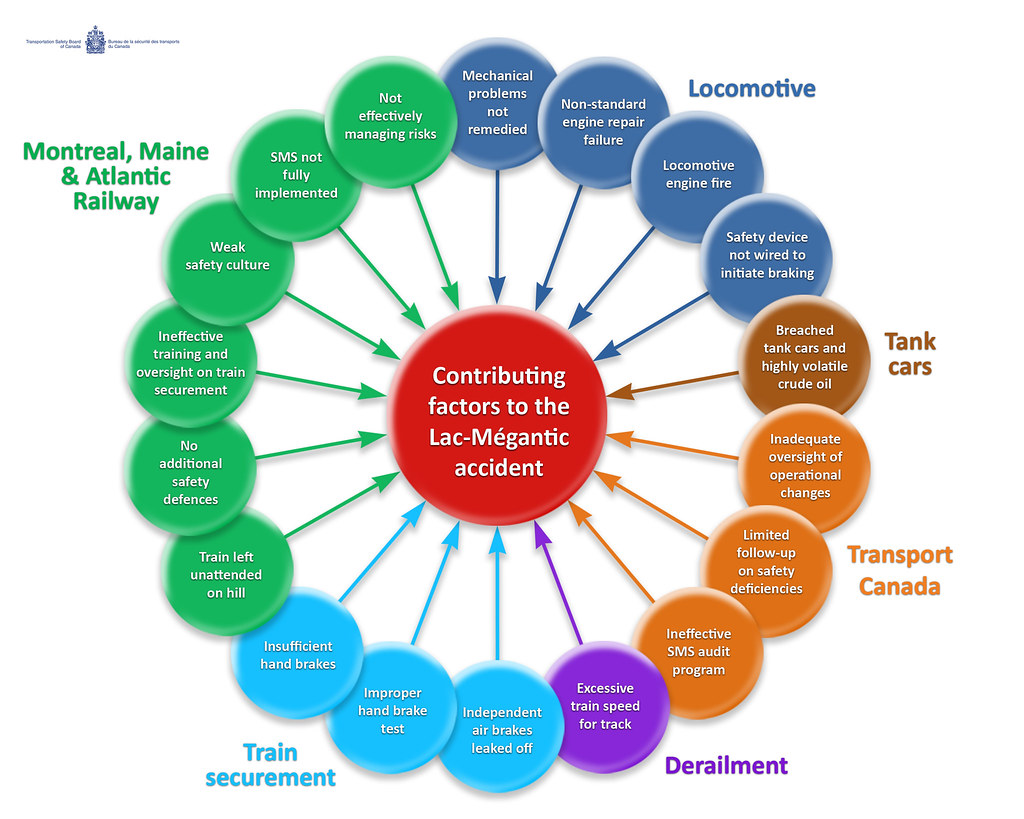 Contributing Factors by TSBCanada, on Flickr
Contributing Factors by TSBCanada, on FlickrIt says "breached tank cars and highly volatile crude oil".
We've previously established that tank cars, no matter their construction, would not have withstood the impacts of the wreck. So then, isn't the oil to blame?
The persuasion I've been picking up lately seems to be a shift towards examining the crude oil itself, regardless of the tank cars. We know now that for instance in WV that the new construction standards just don't (and others could not) withstand the forces of a higher-speed derailment. Shouldn't then, the oil be at least somewhat refined in the field, so as to reduce its volatility?
The persuasion I have been getting is that the oil industry points the fingers at the railroad and says "they need to do a better job at keeping the trains on the tracks", but given the INEVITABLE derailment, shouldn't the oil also be factored in as something that has to change? Seems to me the WELL FUNDED oil lobby is getting a lot done to keep their interests safe.
We've heard a crapton about tank cars and railroad operating practices, but what of the oil - the stuff that actually goes BOOM?
